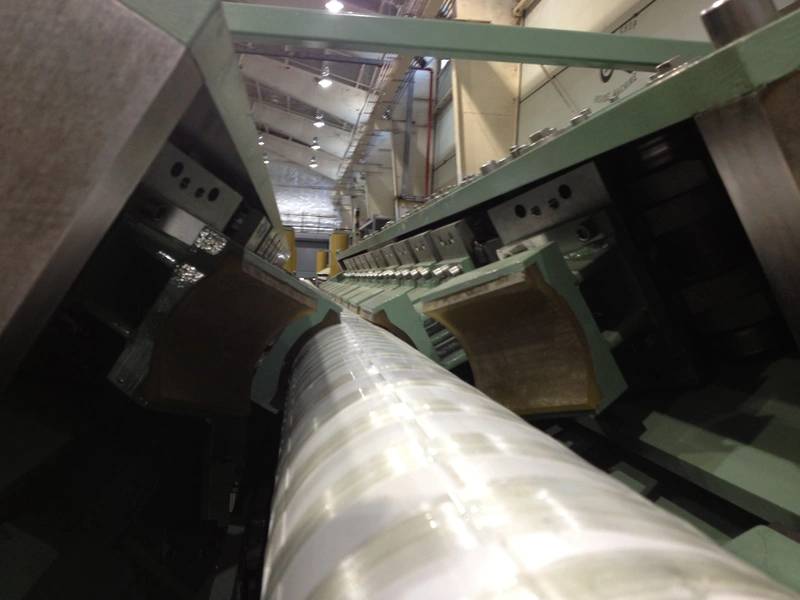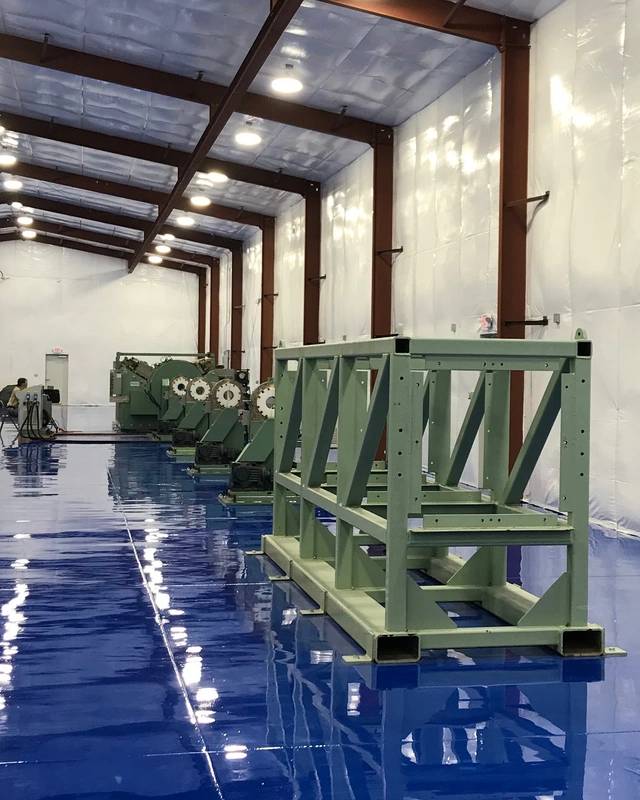
A new method for manufacturing large power umbilicals can shave off 15% to 20% of manufacturing time by minimizing the number of electrical cable splices required.
Power umbilicals can be 10 inches in diameter and up to 60 miles long and take up a lot of space prior to installation, says Vigleik Sexe, VP, products and projects, North America, for Aker Solutions. Making power umbilicals with the company’s existing planetary umbilical machine requires power cabling splices about every two kilometers.
“It takes a lot of time to splice a lot of cable. If you can avoid that, you can save a lot of time in production,” Sexe says.
With that in mind, Aker Solutions sought to develop an umbilical machine that could reduce the splice burden at its Mobile, Ala., umbilical manufacturing facility. Aker Solutions created the Oscilay machine to speed up the production process. With that addition, the company now has two parallel production lines.
“With the new machine, we are close to doubling the production capacity on the site,” he says.
The Oscilay machine can bring power umbilical production down from about 20 months to about 15 months, he says.
“It all depends on the number of power cables and fiber optics. The more power cables, the more time you will save with this technology,” Sexe says.
 Oscilay prototype umbilical taped and entering tensioner. (Photo: Aker Solutions)
Oscilay prototype umbilical taped and entering tensioner. (Photo: Aker Solutions)
A secondary factor in production speed is the length of the source cable.
One of the benefits of fewer splices is improved quality, he adds.
“Every time you splice, you run the risk of a failure,” Sexe says.
Far smaller than the planetary machine, the Oscilay machine fits into a 40-foot container.
“In theory, we could travel with it,” he says. “We’re not there yet, but that could be the next step” for umbilical manufacturing in places with strict local content requirements. “We could bring the machine to the location of where the umbilical is going to be delivered and do production there.”
He believes power umbilicals such as those manufactured by the Mobile facility could see use as umbilicals for turbine control and power transfer for offshore wind developments.
“They’re thick power cables. It’s a good fit,” he says.
 Oscilay machine installed in new building in August 2019. (Photo: Aker Solutions)
Oscilay machine installed in new building in August 2019. (Photo: Aker Solutions)